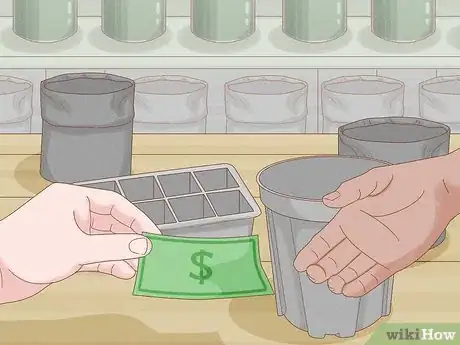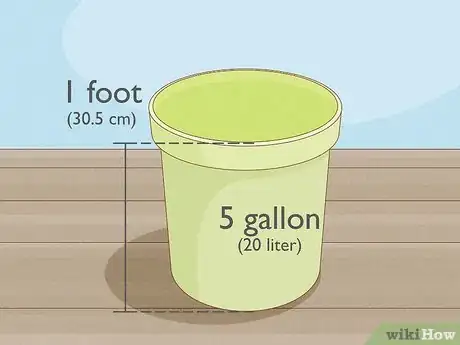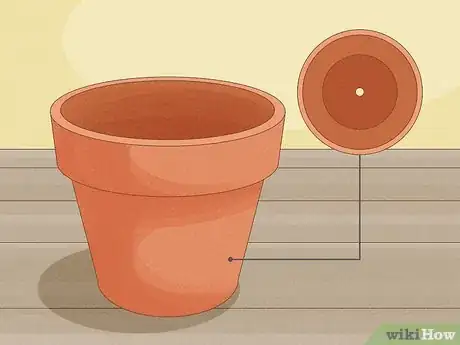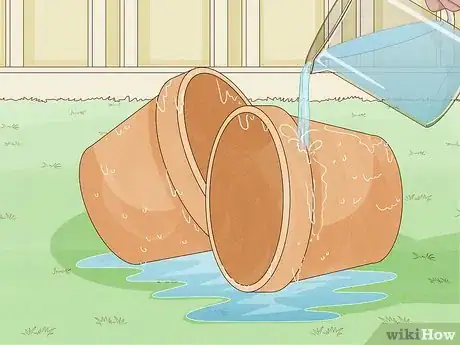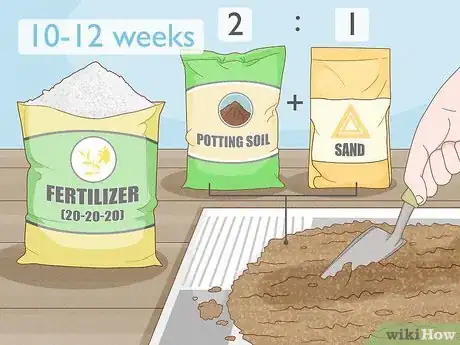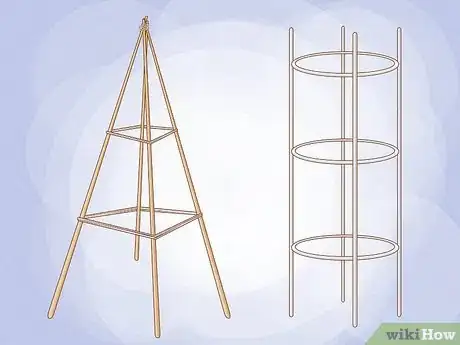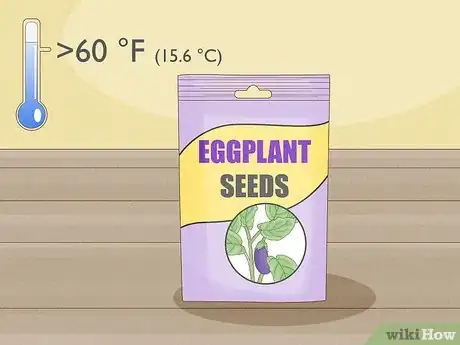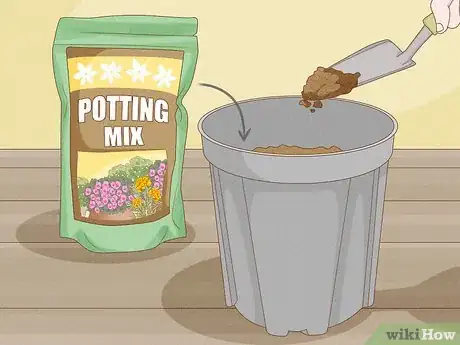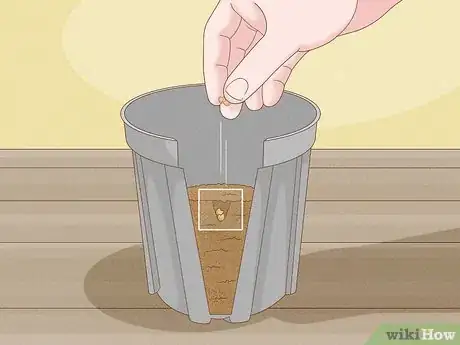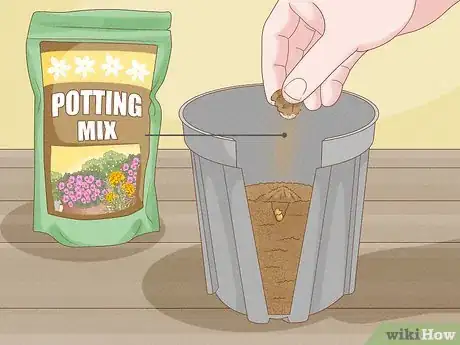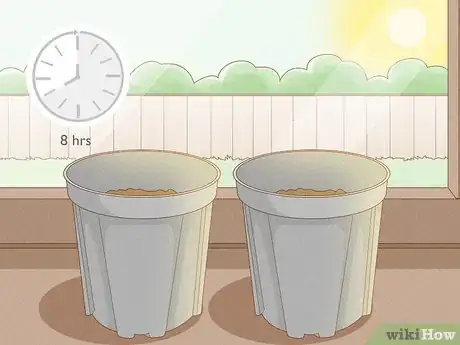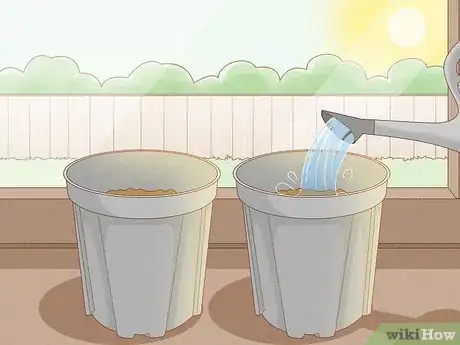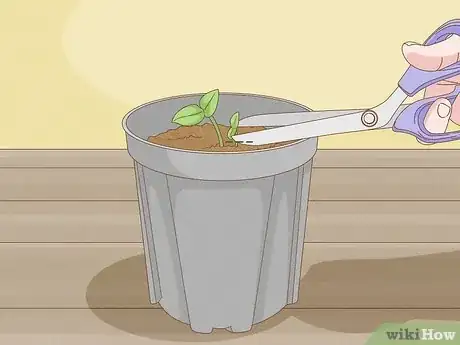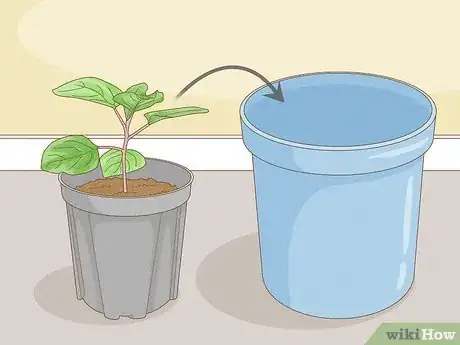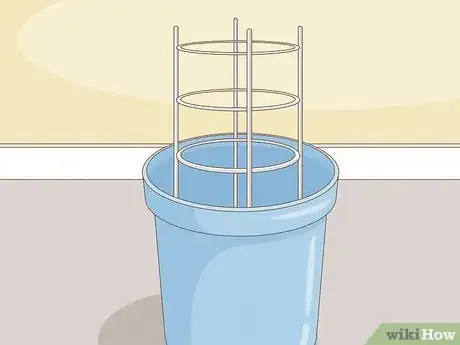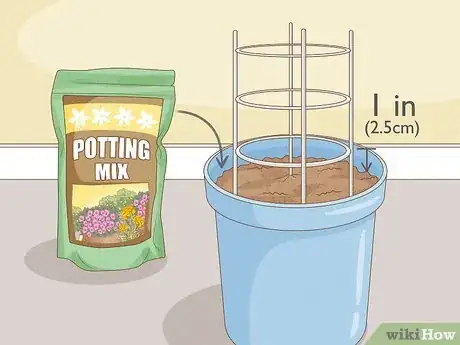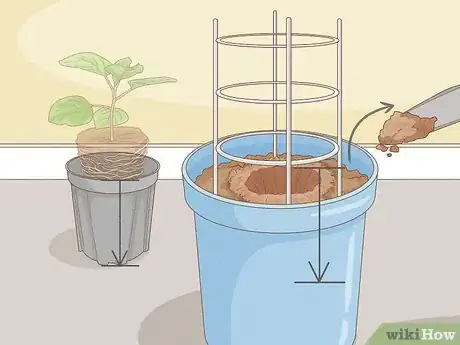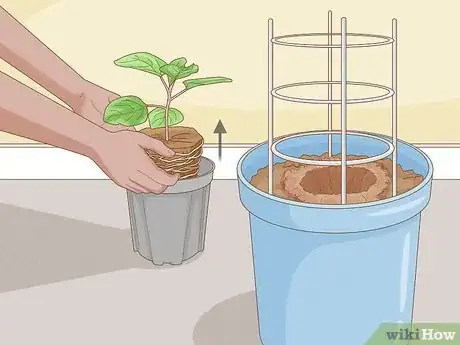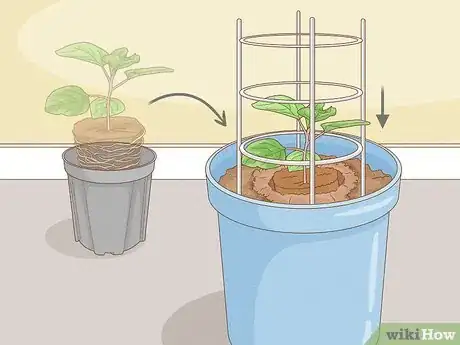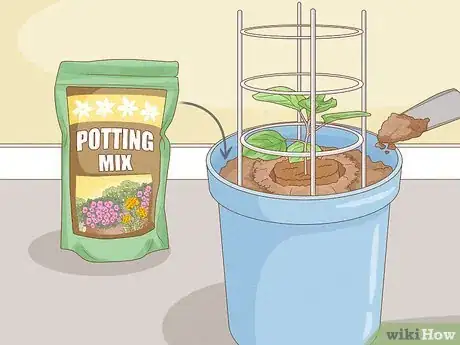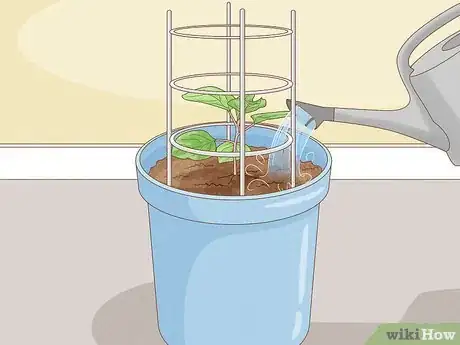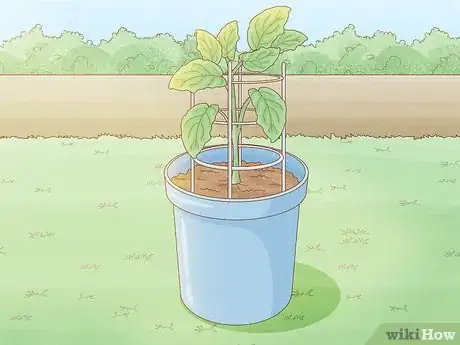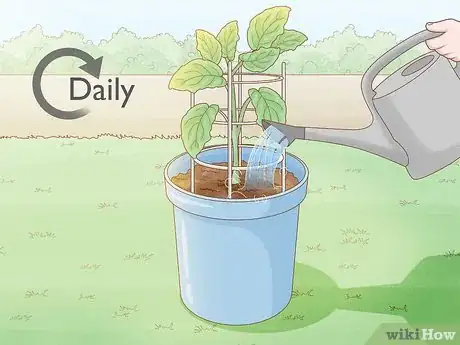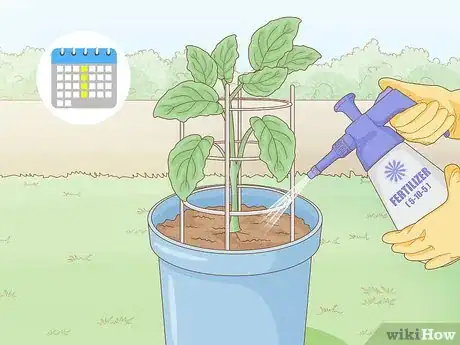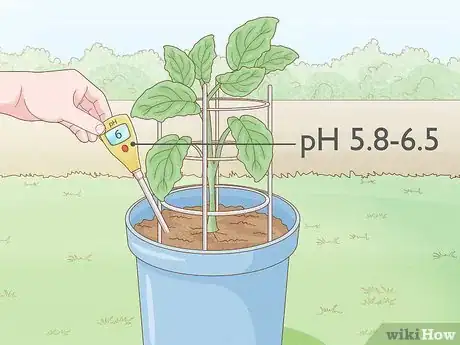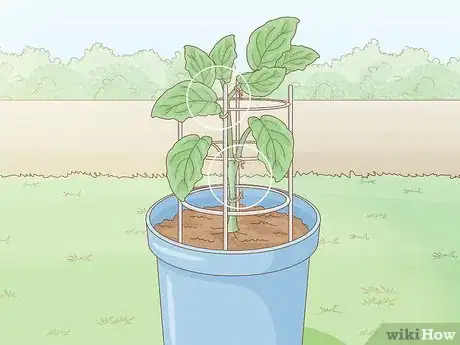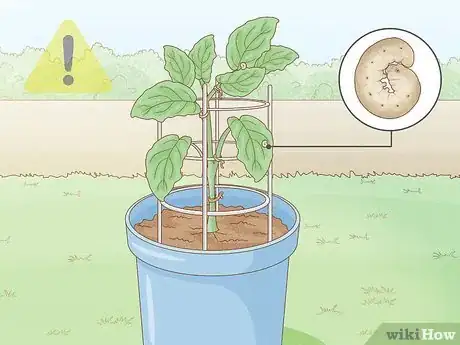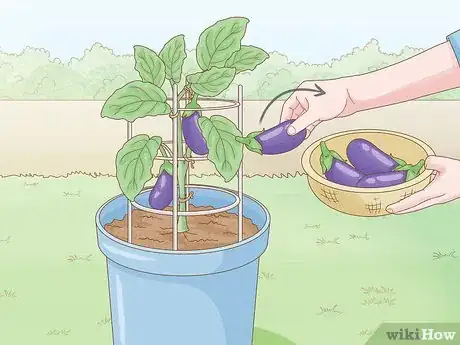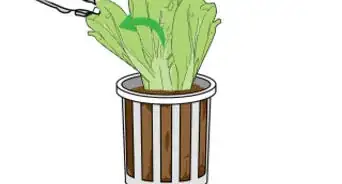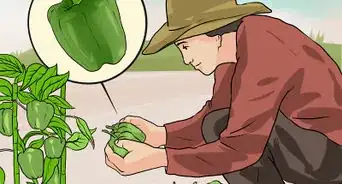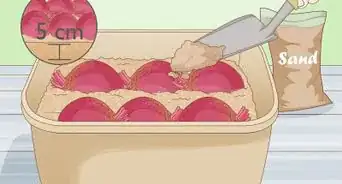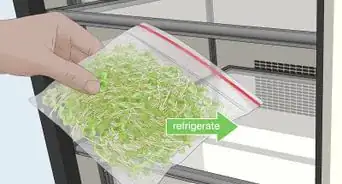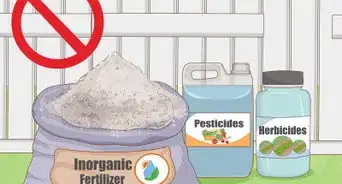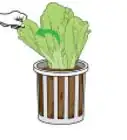wikiHow is a “wiki,” similar to Wikipedia, which means that many of our articles are co-written by multiple authors. To create this article, 14 people, some anonymous, worked to edit and improve it over time.
There are 7 references cited in this article, which can be found at the bottom of the page.
wikiHow marks an article as reader-approved once it receives enough positive feedback. This article received 13 testimonials and 100% of readers who voted found it helpful, earning it our reader-approved status.
This article has been viewed 232,312 times.
Learn more...
Eggplants need a great deal of space to grow, but you can grow them in a container as long as you have a large enough pot. Vast amounts of sunlight are the key in keeping your eggplants happy, primarily due to the fact that eggplants thrive in warm soil. You must also keep the soil thoroughly moist, but not soaked, and well fed with fertilizer and organic matter.
Steps
Preparation
-
1Purchase small pots or plastic gardening trays if starting your eggplants from seed. You need one pot for every two seeds. Seedling trays and other containers made of cheap plastic may make it easier to transfer your seedlings into larger pots later on.[1]
-
2Choose a large pot to house your mature eggplant. The pot must have a 5-gallon (20-liter) capacity, at minimum, and each eggplant should have approximately 1 foot (30.5 centimeters) of space to grow. As a result, you may wish to plant only one eggplant per pot.[2]Advertisement
-
3Opt for a clay pot. Eggplants love heat, and clay pots retain heat better than plastic. Select an unglazed pot if you can remember to water your plants frequently, but go with a glazed pot if you have a history of forgetting to water your plants. Unglazed pots dry the soil out more quickly than glazed pots, so eggplants living in unglazed pots will need more frequent watering.[3]
- Clay pots are also heavier than plastic pots, making it easier for them to support the weight of a mature eggplant.
- The pot should also have large drainage holes to help balance out the moisture level of the soil. Drainage holes will allow excess water to leave the pot, minimizing the risk of root rot.
-
4Clean your containers, especially if the containers once held other plants. Gently scrub the inside and outside of each pot with soap and warm water. If you do not clean your containers, microscopic insect eggs and harmful bacteria inside the pots could damage your eggplants.
-
5Prepare a growing medium. A good, simple option is a mix of two parts potting soil and one part sand. The soil provides your plant with the nutrients it needs, while the sand controls moisture. Mix in a timed-release, pelleted fertilizer using the instructions on the fertilizer label. Initially, it's best to start with a balanced ratio of nitrogen, phosphorus, and potassium: e.g., 20-20-20 or 20-30-20.[4]
- Reapply the pelleted fertilizer after 10-12 weeks.
- After the plant flowers, switch to a fertilizer with high potassium, such as 9-15-30.
-
6Invest in a small support system. Without any support, your eggplants will have very little upward growth and, as a result, they will yield very little fruit. A tomato cage or teepee stake should be enough to provide your plant with adequate support.[5]
Planting Seeds
-
1Start your seeds indoors to get a jump on the growing season. Eggplants require temperatures of 60 degrees Fahrenheit (15.6 degrees Celsius) or higher,[6] which may be difficult to provide in the outdoors during spring. By starting your eggplants indoors, you can begin as early as April.
-
2Fill your small pots or trays with potting mix. The soil should be loosely placed into the containers, but it should not be compressed.
-
3Poke a 1/2-inch (1 1/4-centimeter) hole in the center of each pot or tray compartment. Use your pinky finger or the rounded end of a pen or pencil to create holes with a good diameter.[7]
-
4Place two seeds in each hole. Planting two seeds improves the odds of at least one seed sprouting. Planting more than two seeds may deprive the seeds of the nutrition the need to take root, however.[8]
-
5Cover the seeds with additional potting mix. Lightly drop the soil over the seeds instead of packing it in.
-
6Set the pots or trays out on a warm, sunny windowsill. Choose a window in full sun, meaning one that receives direct sunlight for at least 8 hours a day. Full sun provides enough light and warmth to spur growth.[9]
-
7Water your seeds. Keep the soil moist to the touch at all times, but do not supersaturate, especially if using trays without drainage holes. You do not want to create puddles on the top of your soil, but you should also seek to prevent the soil from ever drying out.[10]
-
8Thin your seedlings once they sprout two sets of leaves. In each pot or tray compartment, keep the stronger of the two seedlings and snip the other one down to soil level. Do not yank the weaker seedling out, since doing so may disrupt the roots of the seedling you wish to keep.
Transplanting Seedlings
-
1Prepare your eggplants for transplanting once the plants have reached at least 1/2-foot (15 1/4 centimeters) in height. Only do this if the weather outdoors has warmed up sufficiently, however. Eggplants do best when kept outdoors, even in pots, since they have more access to sunlight and can be pollinated.[11]
-
2Set up your staking system in your permanent pot. Keep the feet of the stake or tomato cage flat on the bottom of the pot, positioning the stake in a straight, upright position.[12]
-
3Fill your eggplant’s permanent home with your potting medium. Pack the soil around the stake and make sure that the stake is held firmly in place. Leave 1 inch (2.5 centimeters) of empty space in between the top of the soil and the rim of the pot.
-
4Dig a hole in the soil that is as deep and wide as the container your seedlings are currently in. The hole should be in the center of the pot.
-
5Remove the stronger seedling from its previous container. The weaker seedling should have already been thinned out.
- Wet the soil to make it as compact as possible. Moist, compact soil will be easier to transplant than dry, crumbly soil.
- If the seedling is in a cheap plastic container, you can “wiggle” it out of the container by bending the plastic.
- If the seedling is in a stiffer container, you may need to carefully slide a gardening trowel into the side of the pot and beneath the entirety of the pot’s contents. Tip the container on its side and slowly guide the seedling, soil and all, out of the pot.
-
6Place the seedling into the hole in its new pot. Keep the seedling as upright as possible.
-
7Pack additional potting medium around the seedling to fix it in place. Do not press down with too much force, since doing so may damage the root system. You should, however, fill in any empty space in order to make sure that the seedling is firmly in place.
-
8Water the soil. Give your plant a thorough watering, but do not allow puddles to develop on the top of the soil.
Care and Harvest
-
1Place your pot in a sunny location. An outdoor spot that receives full sun is ideal, as both the light and sun are essential in promoting a good harvest. Eggplants thrive in warm soil.
-
2Water your eggplant daily. In hot, dry weather, your plant may even need multiple waterings a day. Feel the surface of the soil with your finger tips and saturate the soil if it appears dry. Allowing the soil to dry out will reduce the number of eggplants you can grow.[13]
-
3Add a liquid fertilizer once every one or two weeks. Use a water soluble fertilizer and water your eggplant before adding it to the soil, rather than adding it to dry soil. Follow the directions on the back of the label to determine an appropriate amount.[14]
- If the leaves of your eggplant begin to pale, you may need to add more fertilizer. A boost of 5-10-5 fertilizer should help significantly if a lack of nutrition is your plant's only problem. A fertilizer with a higher number, meaning a higher percentage of nitrogen, phosphorus, and potassium, may prove too strong.
- Do not dig any deeper than 1/2-inch (1 1/4 centimeters) beneath the surface of the soil when scratching in fertilizer. Digging any deeper than that could disturb the eggplant's roots, which are rather shallow.
-
4Monitor the soil's pH. Soil with a pH between 5.8 and 6.5 should fulfill your eggplant's needs.[15] Litmus paper or a pH meter should be able to give you an accurate reading.
- If you need to increase the pH, try using agricultural lime.
- If you need to decrease the pH, add additional organic matter such as compost or plant litter, or switch to a fertilizer with urea in it.
-
5Tie your eggplant to the stake to promote upward growth. As your plant begins to climb, loosely tie the stem of the plant to the stake using twine or thin fabric thread. Tying the thread too tightly may cut into the stem or choke it.
-
6Keep an eye out for pests. Cutworms are one of the most common pests that attack eggplants, but they can usually be driven away by placing a cutworm collar over the plant. You may also consider an organic pesticide to drive away cutworms and many other pests.[16]
-
7Harvest your eggplants once the skin looks glossy. The fruit should stop growing larger and, in many cases, it will be around the size of a large orange. The length of time this takes varies depending on the variety you chose, but your eggplant will usually be ready for harvest within two or three months after you initially planted your seeds.[17]
- Snip the eggplant off its vine using pruning shears. The vegetable should only have a short stem upon removal.
Community Q&A
-
QuestionHow do I pollinate eggplants?
 Community AnswerUse a small paintbrush with soft bristles to move pollen from the stamens to the pistils. Use a gentle, circular motion to swirl the pollen around the inside of the flower.
Community AnswerUse a small paintbrush with soft bristles to move pollen from the stamens to the pistils. Use a gentle, circular motion to swirl the pollen around the inside of the flower. -
QuestionThere are plenty of flowers, but no fruit. Why?
 Community AnswerThey probably are not pollinated. Perhaps bees or other pollinators are not common in your area. You can try identifying male and female flowers, and then pollinating them by hand.
Community AnswerThey probably are not pollinated. Perhaps bees or other pollinators are not common in your area. You can try identifying male and female flowers, and then pollinating them by hand. -
QuestionWhat do I use to pollinate by hand?
 Community AnswerUsing a small, soft-bristle brush, move the pollen from the stamens to the pistils.
Community AnswerUsing a small, soft-bristle brush, move the pollen from the stamens to the pistils.
Warnings
- Be careful about the pesticides, anti-fungal treatments, and other chemicals you spray onto your eggplants. Many of these chemicals are not safe for human consumption, which means that you should not use them on vegetables you plan to eat. Always check the label of a product before using it on your plants.⧼thumbs_response⧽
Things You'll Need
- Eggplant seeds
- Eggplant seedlings
- Plastic seedling trays or small pots
- Large clay pots
- Potting soil
- Fertilizer
- Watering can or hose
- Staking system
References
- ↑ https://balconygardenweb.com/how-to-grow-an-eggplant-in-a-pot/
- ↑ https://balconygardenweb.com/how-to-grow-an-eggplant-in-a-pot/
- ↑ https://lancaster.unl.edu/hort/articles/2002/typeofpots.shtml
- ↑ https://extension.psu.edu/container-grown-eggplants
- ↑ https://www.almanac.com/plant/eggplants
- ↑ https://www.almanac.com/plant/eggplants
- ↑ https://www.youtube.com/watch?v=wdRAtmfORJ0
- ↑ https://www.youtube.com/watch?v=wdRAtmfORJ0
- ↑ https://www.almanac.com/plant/eggplants
- ↑ https://www.goodhousekeeping.com/home/gardening/a20706884/growing-eggplants/
- ↑ https://www.goodhousekeeping.com/home/gardening/a20706884/growing-eggplants/
- ↑ https://extension.psu.edu/container-grown-eggplants
- ↑ https://www.goodhousekeeping.com/home/gardening/a20706884/growing-eggplants/
- ↑ https://harvesttotable.com/fertilizer-for-tomatoes-peppers-and-eggplants/
- ↑ https://www.almanac.com/plant/eggplants
- ↑ https://extension.psu.edu/container-grown-eggplants
- ↑ https://balconygardenweb.com/how-to-grow-an-eggplant-in-a-pot/
About This Article
To grow eggplants in pots, you'll need to make sure they have plenty of space and sunlight. Eggplants need temperatures over 60 degrees Fahrenheit, but you can plant them indoors during the spring to get a head start. If you’re growing them from seeds, put 2 in each hole you dig. Use a mix of 2 parts potting soil and 1-part sand. Leave the pot somewhere it’ll get 8 hours of direct sunlight a day and keep the soil moist. Once your eggplants reach about 6 inches in height, transplant them to a bigger pot of at least 5 gallons. Eggplants need about a square foot of space each to grow. You’ll also need to provide a staking system to support them as they grow taller. For more tips, including how to deal with pests when growing eggplants outdoors, read on!
